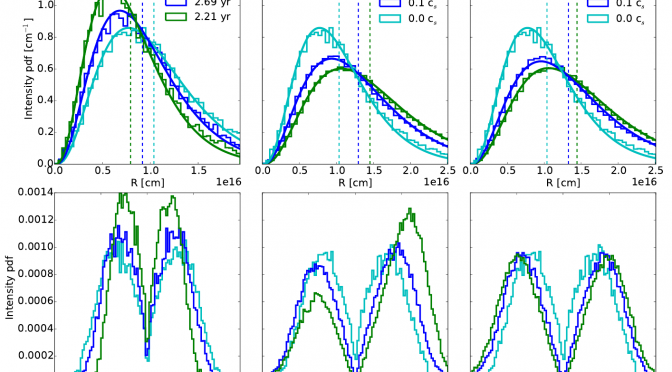Last week, Qi Ge and I submitted a new paper (arXiv) on the importance of Lyman-alpha radiation trapping during the initial phases of massive black hole (BH) formation. Here we used a Monte Carlo method to trace photons in a pre-galactic cloud to see how they can suppress cooling that aids the gravitational collapse. We found that gas temporarily heats to 50,000 K from 10,000 K as it collapses, only to cool back down to its original 10,000 K temperature. This heating could change the characteristic mass scales of massive BH seeds and perhaps the initial BH spin.
The formation of massive black holes with masses between 10,000 and 1 million solar masses is a key seeding mechanism for the quasars observed when the universe was only one billion years old. Lighter black hole seeds form after the death of massive stars, but they have a problem with their initial growth, being surrounded by a warm and diffuse medium left behind by their progenitor star. More massive seeds forego this problem and may be the origins of these rare beasts seen across the observable universe.
